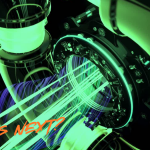No Sand Hill Road – Just $1T Optics Valley Tech
In any emerging startup ecosystem, investors are both the catalyst and the constraint. Their behavior reveals how local innovation matures and whether talent decides to stay or leave. Tucson, known globally as Optics Valley for its concentration of optics, photonics, imaging, and precision-tech companies, offers a revealing example of what happens when deep technical capability meets limited capital infrastructure and an ecosystem primarily built around and for lifestyle businesses. (Not the optics-photonics-enabled industries, which surpass $1 trillion globally.)
Although many believe that the capital is scarce in Tucson, I believe that it hasn’t shown itself because only a small number of startups are investor-ready. Startup Zones, a 501 (c) (3), has been working over the past eighteen months to establish a tech hub community to serve the needs of our tech entrepreneurs. This is done through specialty meetups for techies, supply chain professionals, and entrepreneurs. We have launched an accelerator and mentor training programs.
Investors don’t need convincing to fund startups in nontraditional geographies if the startups show the traction, scalability, and team required to generate a 10X return and a five-year exit. Tucson doesn’t have to chase capital. It must build startups that capital chases. Otherwise, startups will begin their lifecycle here and grow in other, more advanced tech hubs. I want to change this dynamic… Let’s start, develop, build, and scale in Optics Valley.
The Landscape of Early Investment
At the earliest stage, the pre-seed, most funding in Tucson still comes from personal networks, small private investors who know the founder personally or share domain expertise, and to a lesser extent, from angels. These are typically individuals or small syndicates that invest because they believe in the person or the technology, not because they manage a formal venture fund.
Such investors write modest checks enough to validate a prototype, pay for patent filings, or run initial customer discovery, but rarely enough to scale. Their motivation is usually local impact, advisory, and advancing regional innovation. They are the first believers, and in nascent ecosystems like Tucson, they are critical to getting any startup off the ground. But this can only advance the tech hub’s potential so far.
At the seed stage, capital becomes scarcer when startups build teams, customers, and revenue. The pool of professional investors remains small, and most funding decisions rely on trust, domain familiarity, or the perceived credibility of the founder. In a place like Optics Valley, technical founders with ties to research institutions, defense programs, or university labs may find it slightly easier to attract early but still modest investment, since those relationships convey technical legitimacy.
By Series A, where capital requirements jump into the multimillion-dollar range, few Tucson companies can rely solely on local sources. The resources and options are limited, lacking a lead investor pedigree and mid to high-risk investing tolerance. They must reach beyond Tucson and even Arizona to attract institutional capital, typically through regional or national networks, strategic partners, or corporate venture divisions with interests in defense, space, optics, and photonics-enabled technologies in almost every vertical.
Do Tucson Companies Get Serious Venture Capital?
Yes, but the path is nonlinear and requires deliberate strategy. Startups that succeed in raising significant venture capital are doing it from sources outside Arizona and share a few common traits.
1. They show execution and early traction.
Investors everywhere respond to evidence. Companies that build MVP prototypes, secure letters of intent, demonstrate revenue, or attract government contracts de-risk the opportunity. Proof always travels better than just pitch decks.
2. They align with recognizable markets.
The most successful Tucson startups position themselves in areas investors already understand, such as optics for defense, imaging for MedTech, biotech, precision manufacturing, or software that leverages optical data. They connect their technology to established market demand rather than forcing investors to learn a new category.
3. They leverage hybrid geography.
Many Tucson founders maintain research and development locally while establishing a business presence near major venture corridors or customers. This “dual-location” model reassures investors about accessibility while retaining Tucson’s cost and talent advantages.
4. They use non-dilutive funding to bridge the gap.
Because Tucson has deep relationships with federal agencies and research institutions, founders can often access grant funding, Small Business Innovation Research (SBIR) awards, or defense contracts to sustain progress until private capital becomes available.
5. They cultivate storytelling and investor readiness.
Founders who translate complex technology into compelling, human-centered narratives consistently raise more capital. Technical depth must be paired with the ability to explain customer pain points and growth potential in plain terms. In nascent ecosystems, the best storytellers often become the first breakout successes.
What Really Drives Investment: Location or Team Quality?
Investors will tell you they invest in people, not places. Yet in practice, geography still shapes opportunity, particularly in emerging ecosystems. The reality sits between the two. However, the lead investor decides on the location of the new venture’s headquarters.
Team and potential dominate
Investors assess the founder’s capacity to execute, adapt, and lead in every serious venture decision. A great team with traction can overcome almost any geographic disadvantage. Tucson’s challenge has never been a lack of brains or ideas; it has been limited exposure to high-quality startups. When investors encounter credible founders with strong technical expertise, execution, validated IP, and early customer adoption, they invest even if the zip code isn’t in Silicon Valley.
But location still matters.
Investors like proximity. They prefer to meet founders in person, attend board meetings, and see progress firsthand. Ecosystems with density, meaning more startups, mentors, and professional services, make that process easier. Tucson’s relative distance from venture corridors means it must compensate through relationship-building, storytelling, virtual transparency, and funding readiness.
Moreover, investors gauge the local environment’s ability to support scale. They ask: Is there technical talent available? Are suppliers and customers nearby? Is there legal and financial infrastructure for follow-on rounds? The stronger these elements become, the less geography matters.
The Mindset Shift Tucson Needs
For Tucson to attract more serious capital, it must continue evolving from a project mindset to a venture mindset. Investors don’t just fund technology; they fund ambition, scalability, and execution discipline. In many young ecosystems, founders focus on perfecting the prototype or applying for grants rather than testing the market. Meanwhile, investors look for signals of speed, learning, and adaptability.
To bridge this gap, founders need better training in investor expectations: communicating risk, traction, and milestones in venture language. They must also learn to treat capital as a growth accelerant, not validation. The most investable founders are those who know where they’re going with or without the check.
At the ecosystem level, we must orchestrate visibility: consistently showcasing local tech ventures to outside investors through curated pitch events, demo days, and storytelling campaigns emphasizing Optics Valley technologies‘ unique power. Startup Zones is singularly focused on making this a reality with those who are willing or alone.
Conclusion: From Nascent to Noticed
Investment follows quality and momentum. Tucson’s advantage is not size but specialization. The region produces world-class optics, photonics, and aerospace innovations, powered by technical talent, research excellence, and manufacturing know-how. What it lacks in density, it makes up for in distinctiveness.
The investors who succeed here, local or external, will recognize that innovation is no longer confined to coastal zip codes. They will see that the next wave of venture growth is distributed, domain-driven, and community-anchored.
For founders, the lesson is clear: don’t wait for capital to validate your vision. Build traction, tell your clear, concise, and powerful story, and make Tucson where investors come after seeing what you’ve already accomplished. Because in nascent ecosystems, belief precedes capital, which Tucson already has in abundance.








